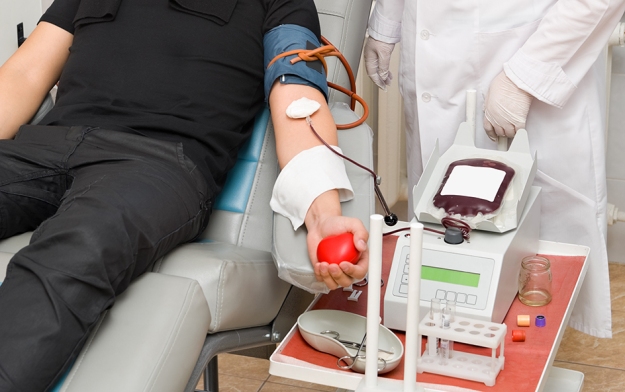Conditions & Treatments, Health & Wellness
Health Series – National Blood Donor Month – Giving Blood
 It’s vital to keep blood donations coming in to blood banks around the country throughout the year. Day in and day out, there’s a constant need for lifesaving donations.
It’s vital to keep blood donations coming in to blood banks around the country throughout the year. Day in and day out, there’s a constant need for lifesaving donations.
Whether it be for accidents, cancer treatments or for premature infants, donating blood is important each and every day.
If you’ve never given blood, you might be a bit intimidated about what really happens at a blood drive. Maybe it’s your fear of needles that has prevented you from donating. Maybe it’s just the unknown – you’re not sure what’s going to happen.
No matter if you’ve never donated or are an old pro, here’s the process in 5 simple steps. Now you can see how easy it really is to help save lives by donating blood.
Registration – When you come to donate blood, first you’ll sign in and fill out paperwork to see if you qualify. The questions generally have to do with your general health, weight and medications. You’ll also answer questions about specific conditions and activities – such as recently getting a tattoo.
Verification – After you have been approved to donate, you will need to provide a valid form of identification – such as a driver’s license or passport. If you have a donor card, they will note your donation that day. They also keep track so you can be recognized after milestone donations.
Mini-physical – In a very confidential area, a technician will take your blood pressure, pulse and temperature. The iron level of your blood also will be measured. All of these are to ensure that you are physically healthy enough to donate. While your blood iron is being processed, the technician might ask you about places you’ve traveled or lived, activities and how you’re feeling that day.
Donating – This may actually be the quickest part of the whole process. Within 10 minutes, you will recline in a comfortable chair, your injection site will be cleaned, the needle inserted and your donation collected. You won’t even notice that you’re donating. And don’t worry, an automatic system shuts off the procedure when you’ve reached the proper donation amount. There’s no fear they’ll take too much.
Refreshment – After donation, you will be served a snack and something to drink to help replenish your fluids. You’ll be asked to stay for about 15 minutes to make sure you are strong enough. Then you can continue on with your daily activities. They’ll give you a sheet of guidelines for the rest of the day, such as avoiding heavy lifting and drinking more fluids.
After you’ve donated blood, you’ll feel a sense of accomplishment knowing that you’ve helped other people. With a national quota of 44,000 units of blood needed per day, you’ll be able to count yourself as one of the tens of thousands of people who helped save the life of someone who needed your gift of blood that day.
For more information about donating blood, visit the American Red Cross or another blood collection agency in your area.
Sources:
http://chapters.redcross.org/az/bloodregion/blooddonqual.htm
http://www.redcrossblood.org/students/donating-101/what-do-i-need-know
http://www.redcrossblood.org/donating-blood
http://www.racheleditullio.com/bdd/physical.html
http://www.vablood.org/donors/interesting-facts/
Related Articles
Health Series – National Blood Donor Month – How Donated Blood is Used
Join the Discussion
0 Comments